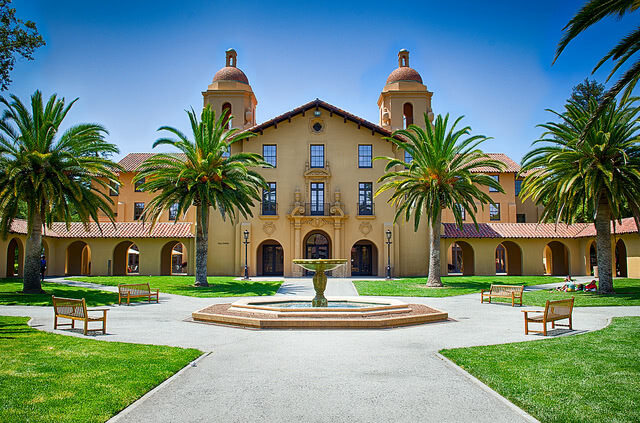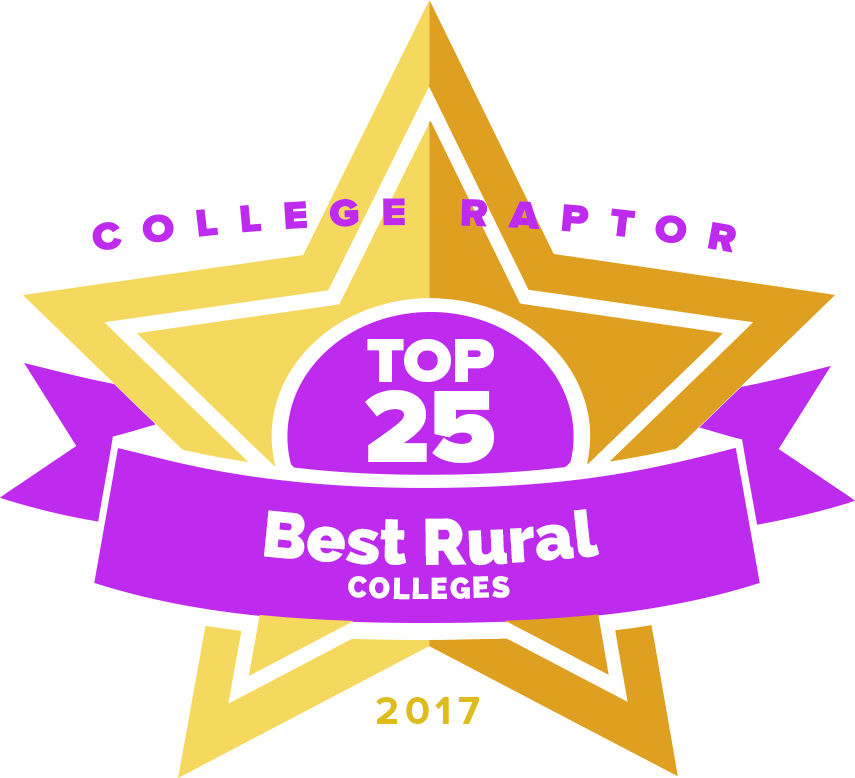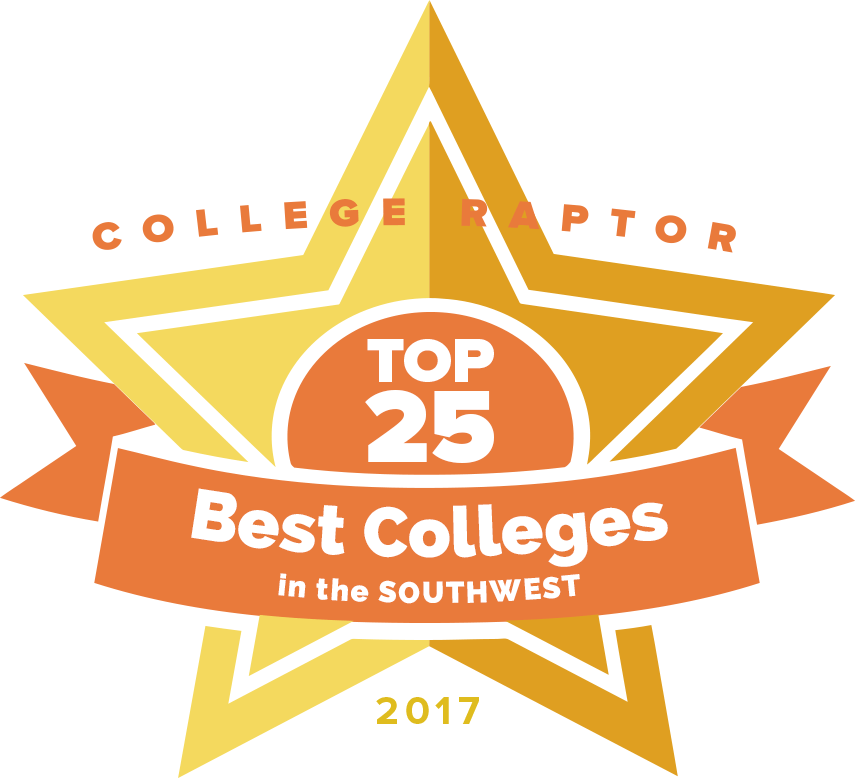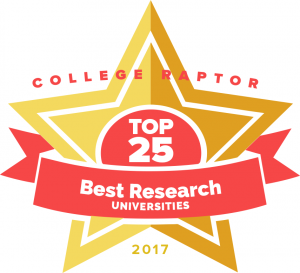 As their name would suggest, research universities focus heavily on research! While many of these academically-inclined institutions have undergraduate programs, a great emphasis is put on their graduate / doctoral programs.
As their name would suggest, research universities focus heavily on research! While many of these academically-inclined institutions have undergraduate programs, a great emphasis is put on their graduate / doctoral programs.
At research universities, students can earn their PhDs and go out into the world to change it. So we’ve come up with a list of the best of the best. Here are College Raptor’s Top 25 Best Research Universities of 2017!
25. Georgetown University
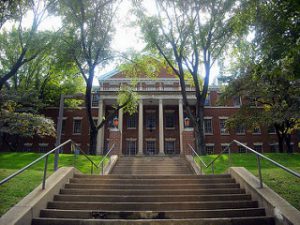
Flickr user Josh
Location: Washington, DC
Student Enrollment: 17,858
College Type: Private, nonprofit, 4 year or above
This historic research university was founded in 1789. It’s law school rests on Capitol Hill and the school is closely entwined with the DC area. Georgetown is strong in academics, with its incoming freshmen scoring between 30 and 34 on the ACT, and between 1,328 and 1,504 for the SAT. For athletics, the school is considered a NCAA Division I-AA.
24. University of California—Los Angeles
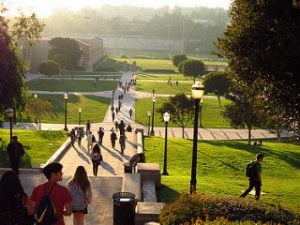
Flickr user Ignacio Andrade
Location: Los Angeles, CA
Student Enrollment: 41,845
College Type: Public, 4 year or above
An impressive 93,000 some applications are submitted to UCLA. The university has a 17% acceptance rate, so only about 16,000 are accepted per year. It has a 96% first-year retention rate. There are countless notable alumni, including: composer John Williams, CEO of YouTube Susan Wojcicki, and director Francis Ford Coppola, among many others.
Learn more about the University of California–Los Angeles
23. Johns Hopkins University
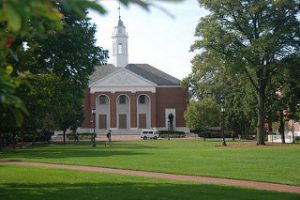
Flickr user Let Ideas Compete
Location: Baltimore, MD
Student Enrollment: 21,372
College Type: Private, nonprofit, 4 year or above
This Doctoral / Research university is known the world over for its academics. Incoming freshman average between 31 and 34 on their ACT exams, and 1,384 and 1,522 for the SAT. It is a highly selective school, with an acceptance rate of 14% for the 25,500 some applications that are sent in every year. Notable alumni include: President Woodrow Wilson, director Wes Craven, and author Gertrude Stein.
Learn more about Johns Hopkins University
22. University of Michigan—Ann Arbor
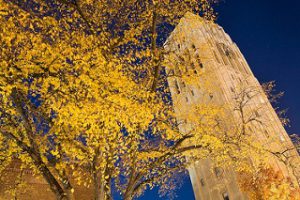
Flickr user University of Michigan’s Ford School
Location: Ann Arbor, MI
Student Enrollment: 43,625
College Type: Public, 4 year or above
The top 5 most popular majors on campus include: Business Administration, Economics, Experimental Psychology, Computer and Information Sciences, and Physiological Psychology. In terms of athletics it is a NCAA Division I-A school, and sports on campus include: track, football, lacrosse, and rowing among others.
Learn more about the University of Michigan–Ann Arbor
21. University of North Carolina at Chapel Hill
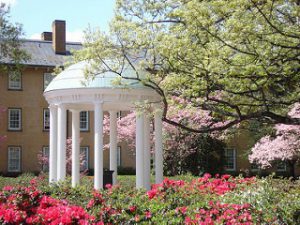
Flickr user Zach Mullen
Location: Chapel Hill, NC
Student Enrollment: 29,135
College Type: Public, 4 year or above
UNC is known for the Old Well located in the middle of campus—in fact, the Well is the symbol for the school. About 30,000 applications are sent into UNC every year, with over 9,600 of them being accepted—giving the university a 31% acceptance rate. Biology is the most common major on campus.
Learn more about the University of North Carolina at Chapel Hill
20. Rice University
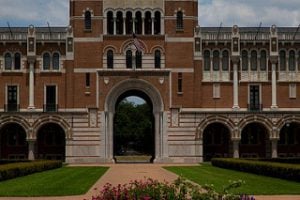
Flickr user Ed Schipul
Location: Houston, TX
Student Enrollment: 6,621
College Type: Private, nonprofit, 4 year or above
Sporting the colors blue and grey, the students at Rice are nicknamed the Owls, and their mascot is Sammy the Owl. Science and mathematics are highly regarded at this school, the most common majors being: Biochemistry, Psychology, Chemical Engineering, Kinesiology, and Mechanical Engineering.
Learn more about Rice University
19. Cornell University
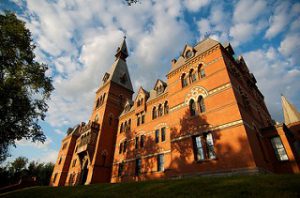
Flickr user Robert Thompson
Location: Ithaca, NY
Student Enrollment: 21,679
College Type: Private, nonprofit, 4 year or above
Nearly 42,000 applications are sent in to this school, and with an acceptance rate of 15% only about 6,300 of those applicants are chosen. Cornell boasts a 97% first-year retention rate and a student-faculty ratio of 9:1. They have a total of about 1,086 athletes on campus and are considered a NCAA Division I-AA school.
Learn more about Cornell University
18. University of California–Berkeley
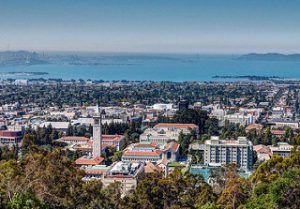
Flickr user Mike Procario
Location: Berkeley, CA
Student Enrollment: 37,565
College Type: Public, 4 year or above
UC Berkeley is the oldest of the 10 research universities associated with the University of California system. Their school motto “Fiat lux” means “Let there be light.” With their signature colors of Berkeley Blue and California Gold, UC Berkeley students are nicknamed the Golden Bears. The most common major on campus is Economics, followed by Cell and Molecular Biology and Electrical Engineering.
Learn more about University of California–Berkeley
17. Vanderbilt University
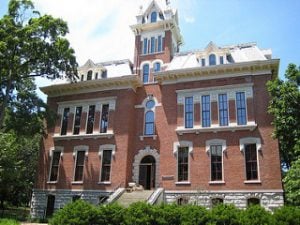
Flickr user Kevin Oliver
Location: Nashville, TN
Student Enrollment: 12,686
College Type: Private not-for-profit, 4-year or above
Nicknamed “Vandy”, this school is also a nationally recognized arboretum, with an abundance of trees and shrubs throughout the campus. The two most popular majors are economics and social sciences. The average ACT composite score for incoming first-year students is between 32 and 35, and the average SAT combined score is between 1,424 and 1, 572.
Learn more about Vanderbilt University
16. Dartmouth College
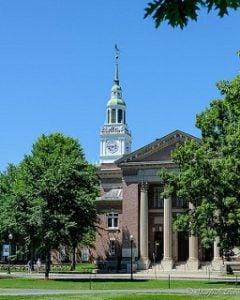
Flickr user Mike Fisher
Location: Hanover, NH
Student Enrollment: 6,298
College Type: Private not-for-profit, 4-year or above
Founded in 1769, Darmouth is the smallest of all Ivy League schools. Theodore Geisel, also known as Dr. Seuss, was a 1925 graduate of the college and worked for the school’s humor magazine during his years there.
Learn more about Dartmouth College
15. Washington University in St. Louis
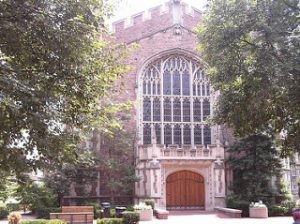
Flickr user jayo128
Location: St. Louis, Missouri
Student Enrollment: 14,348
College Type: Private not-for-profit, 4-year or above
Psychology and Biology are the most popular majors at this university, where incoming ACT composite scores are between 32 and 34, and SAT combined scores are between 14,12 and 1,526. The university offers classes on campus and through distance learning, for both undergraduate and graduate students.
Learn more about Washington University in St. Louis
14. Northwestern University
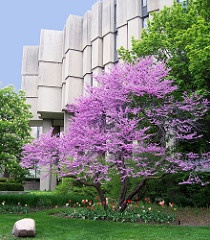
Flickr user Allan Tokuda
Location: Evanston, IL
Student Enrollment: 21,554
College Type: Private not-for-profit, 4-year or above
Settled near the city of Chicago, Northwestern University offers more than 120 majors for undergraduate students to choose from. The school is a NCAA Division-I university, with close to 500 student-athletes.
Learn more about Northwestern University
13. University of Virginia
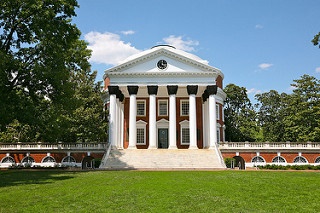
Flickr user Alex Proimos
Location: Charlottesville, VA
Student Enrollment: 23,732
College Type: Public, 4-year or above
Thomas Jefferson, James Monroe, and James Madison (among others), helped select the city of Charlottesville to be home to the university. Here you’ll find liberal arts studies and business to be the most popular majors.
Learn more about the University of Virginia-Main Campus
12. Duke University
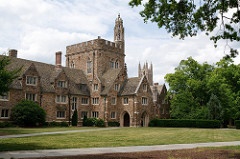
Flickr user Nan-Cheng Tsai
Location: Durham, North Carolina
Student Enrollment: 15,856
College Type: Private not-for-profit, 4-year or above
Duke has produced an impressive number of Rhodes, Fulbright, Marshall, Truman, Goldwater, and Udall Scholars. The most popular degrees are public policy analysis and economics, and the university has a first-year retention rate of 97%.
Learn more about Duke University
11. University of Notre Dame
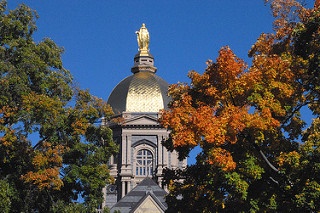
Flickr user Dan Dzurisin
Location: Notre Dame, IN
Student Enrollment: 12,179
College Type: Private not-for-profit, 4-year or above
At the University of Notre Dame, students can live in one of 29 single-sex residence halls on campus. The most popular majors are finance and accounting, followed closely by accounting. Condoleezza Rice received her master’s degree in political science from the university in 1975.
Learn more about the University of Notre Dame
10. Brown University
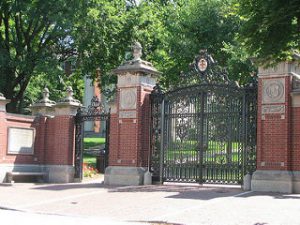
Flickr user thurdl01
Location: Providence, RI
Student Enrollment: 9,181
College Type: Private not-for-profit, 4-year or above
Home to Bruno the Bear, Brown University has graduated a wealth of notable alumni. This research university was the first to accept students regardless of their religious affiliation, and has a 9:1 student to faculty ratio.
Learn more about Brown University
9. Columbia University in the City of New York
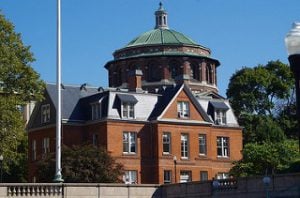
Flickr user Mike Steele
Location: New York, New York
Student Enrollment: 27,589
College Type: Private not-for-profit, 4-year or above
Columbia was founded before the Declaration of Independence was signed, and was the first school to in America to grant an M.D. degree. Columbia has a 6:1 student to faculty rate. Theodore Roosevelt, Franklin Delano Roosevelt, and Ruth Bader Ginsburg are all graduates of Columbia Law.
Learn more about Columbia University in the City of New York
8. University of Pennsylvania

Flickr user Stephen M. Scott
Location: Philadelphia, PA
Student Enrollment: 24,806
College Type: Private not-for-profit, 4-year or above
Nicknamed “Penn”, the university was founded by Benjamin Franklin, and has an acceptance rate of 10%, admitting a little more than 3,700 students each year. Distinguished alumni include Warren Buffett, John Legend, Noam Chomsky, and John Heisman.
Learn more about the University of Pennsylvania
7. California Institute of Technology
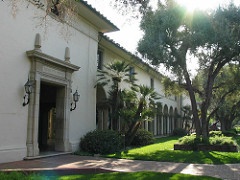
Flickr user Lana L.
Location: Pasadena, CA
Student Enrollment: 2,209
College Type: Private not-for-profit, 4-year or above
The average ACT composite score for incoming students ranges from 34 to 36, and the average SAT combined score ranges from 1,504 to 1,584. “The truth shall make you free” as the CalTech motto states, and while the school is well-known for academics and alumni, it is also known for the pranks that happen on campus.
Learn more about the California Institute of Technology
6. University of Chicago
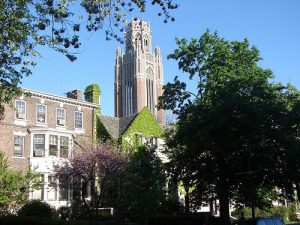
Flickr user Luiz Gadelha Jr.
Location: Chicago, IL
Student Enrollment: 15,097
College Type: Private not-for-profit, 4-year or above
The University of Chicago boasts a 100% first-year retention rate, and a 6:1 student to faculty ratio. Founded by John D. Rockefeller in 1890, UChicago has since given birth to 89 Nobel Prize winners, 5 of whom currently still teach at the institution.
Learn more about University of Chicago
5. Massachusetts Institute of Technology
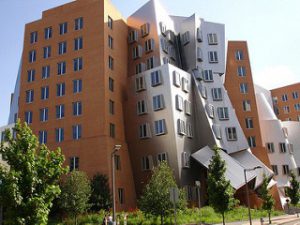
Flickr user Matthew Robinson
Location: Cambridge, MA
Student Enrollment: 11,319
College Type: Private, not-for-profit, 4 year or above
Also known as MIT, the Massachusetts Institute of Technology is well known for its science, technology and engineering programs as well economics and management. Alumni are responsible for creating 4.6 million jobs among 30,000 companies. The overall revenue of these companies comes to approximately $1.9 trillion which equates MIT alumni with the 10th largest economy in the world.
Learn more about the Massachusetts Institute of Technology
4. Stanford University
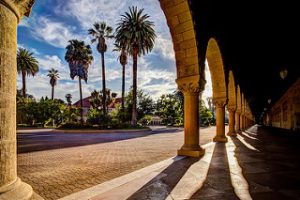
Flickr user Robbie Shade
Location: Stanford, CA
Student Enrollment: 16,963
College Type: Private, not-for-profit, 4 year or above
Stanford University has a 4:1 student to faculty ratio and an average ACT score of 33. Of the nearly 17,000 enrolled students, 97% live on central campus which is primarily located in Silicon Valley. Its location fosters an innovative, entrepreneurial mindset and culturally diverse student population.
Learn more about Stanford University
3. Yale University
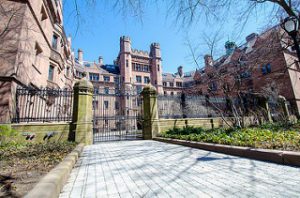
Flickr user m01229
Location: New Haven, CT
Student Enrollment: 12,336
College Type: Private, not-for-profit, 4 year or above
Founded in 1701, Yale is the third oldest higher education institution in the country. It is also home to the third largest University library collection in the country with 15 million volumes. Furthermore, Yale is the alma mater of 5 U.S presidents, 19 supreme court justices and 13 living billionaires.
Learn more about Yale University
2. Harvard University
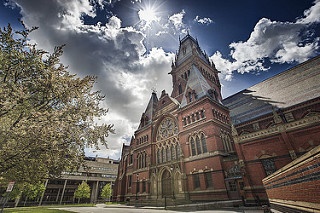
Flickr user Yu-Jen Shih
Location: Cambridge, MA
Student Enrollment: 28,791
College Type: Private, not-for-profit, 4 year or above
Harvard University is the oldest and one one of the most reputable institutions of higher education in the United States. With $37.6 billion in financial endowment, it is also the largest academic institution in the country.
Learn More about Harvard University
1. Princeton University
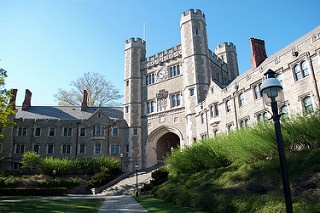
Flickr user Jon Niola
Location: Princeton, NJ
Student Enrollment: 8,088
College Type: Private, not-for-profit, 4 year or above
Princeton was established prior to the American Revolution as one of the nine colonial colleges. Today, it offers highly esteemed programs in the humanities, social sciences, natural sciences and engineering. Notable Princeton alumni include Michelle Obama, John Adams, Woodrow Wilson, Scott Fitzgerald, Steve Forbes, Meg Whitman and Brooke Shields.
Learn More about Princeton University
—
Each of these rankings is based on an analysis of data about the school’s selectivity, financial health, academic rigor, and student success. We’ve outlined our full methodology here.


